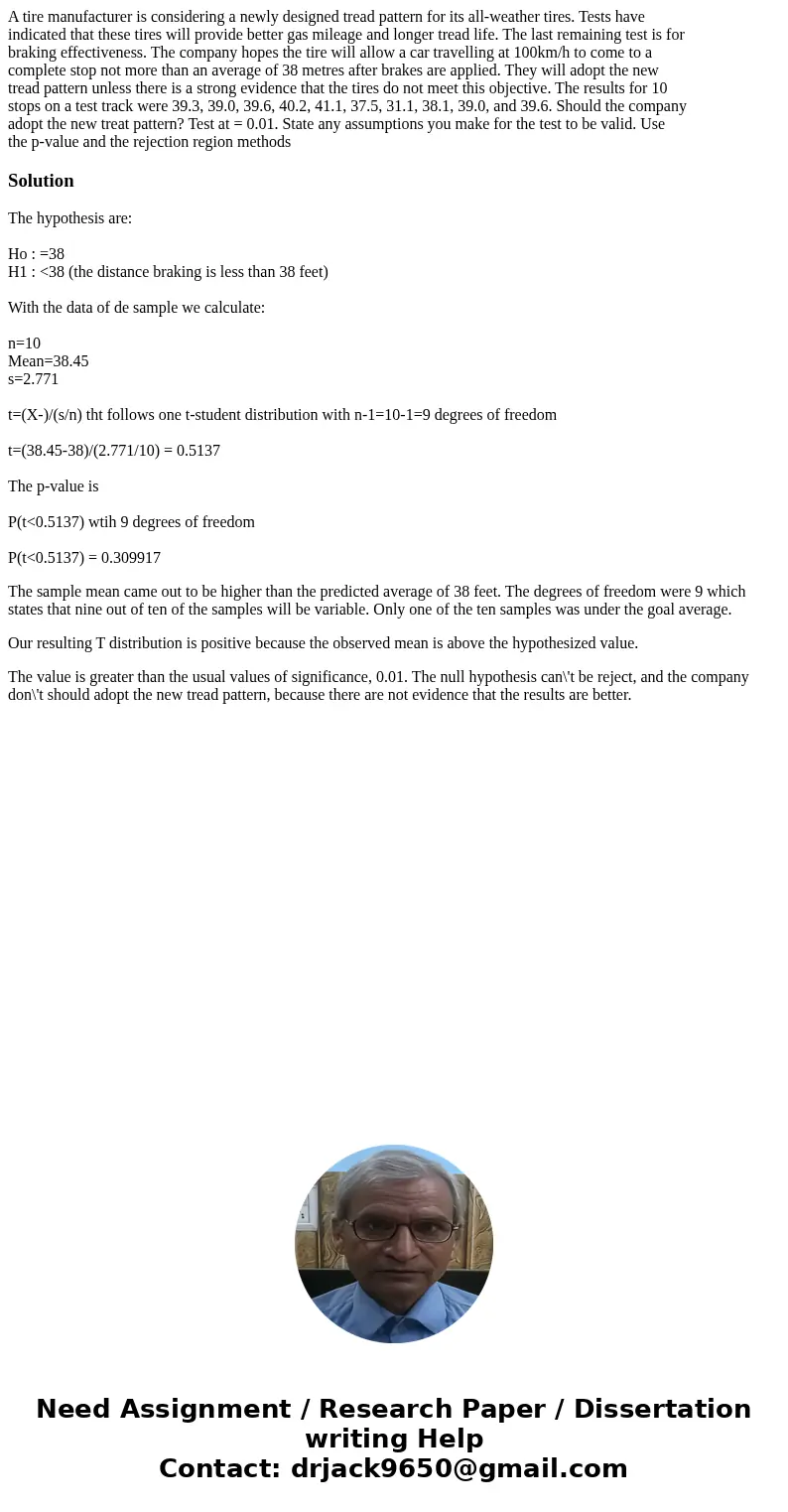A tire manufacturer is considering a newly designed tread pa
A tire manufacturer is considering a newly designed tread pattern for its all-weather tires. Tests have
indicated that these tires will provide better gas mileage and longer tread life. The last remaining test is for
braking effectiveness. The company hopes the tire will allow a car travelling at 100km/h to come to a
complete stop not more than an average of 38 metres after brakes are applied. They will adopt the new
tread pattern unless there is a strong evidence that the tires do not meet this objective. The results for 10
stops on a test track were 39.3, 39.0, 39.6, 40.2, 41.1, 37.5, 31.1, 38.1, 39.0, and 39.6. Should the company
adopt the new treat pattern? Test at = 0.01. State any assumptions you make for the test to be valid. Use
the p-value and the rejection region methods
Solution
The hypothesis are:
Ho : =38
H1 : <38 (the distance braking is less than 38 feet)
With the data of de sample we calculate:
n=10
Mean=38.45
s=2.771
t=(X-)/(s/n) tht follows one t-student distribution with n-1=10-1=9 degrees of freedom
t=(38.45-38)/(2.771/10) = 0.5137
The p-value is
P(t<0.5137) wtih 9 degrees of freedom
P(t<0.5137) = 0.309917
The sample mean came out to be higher than the predicted average of 38 feet. The degrees of freedom were 9 which states that nine out of ten of the samples will be variable. Only one of the ten samples was under the goal average.
Our resulting T distribution is positive because the observed mean is above the hypothesized value.
The value is greater than the usual values of significance, 0.01. The null hypothesis can\'t be reject, and the company don\'t should adopt the new tread pattern, because there are not evidence that the results are better.

 Homework Sourse
Homework Sourse